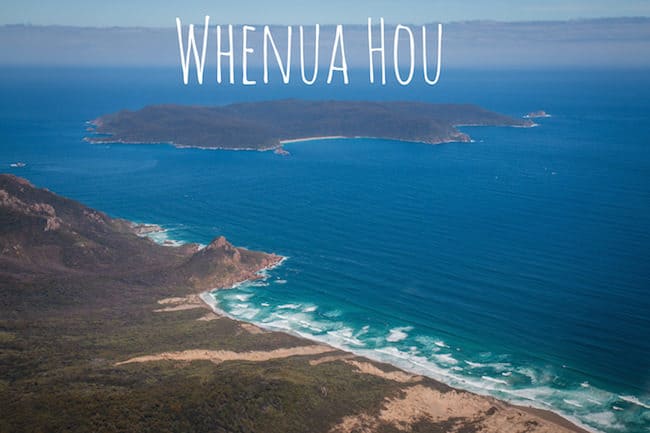
The sun was frying the top of my head like an egg on the warmest day this spring in New Zealand as I slipped and slid my way through the mud towards the the summit rocks on top of Whenua Hou (Codfish Island), home of one of the rarest birds in the world – the kākāpō.
With a population of only 125 birds left in the world, the kākāpō is a nocturnal flightless green bird that kinda looks like a parrot and an owl had a baby. They have literally been brought back from the brink of extinction by a handful of determined individuals, most of which now were out and about tracking and working on this little island at the end of the world.
Whenua Hou (remember “wh” is pronounced as an “f”) is one of the few predator-free islands where these elusive and rare birds call home. Because their main defense is camouflage as they can’t fly, kakapo were almost wiped out when humans brought animals like cats, stoats, possums, and rats to New Zealand back in the day even after strong conservation efforts. Time to make amends.
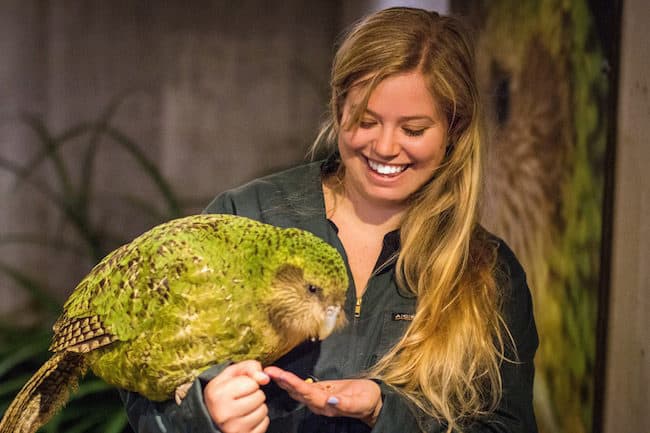
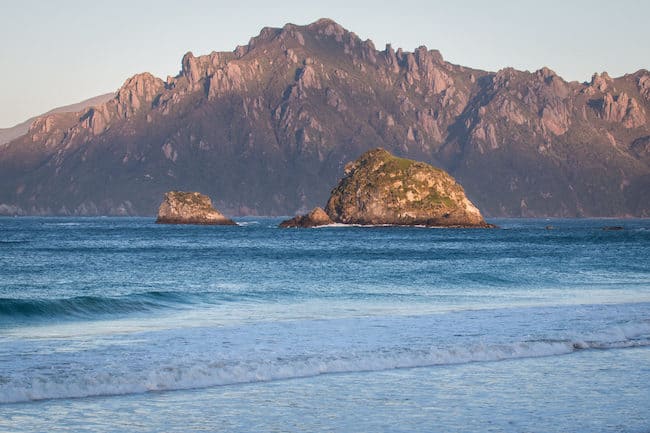
Kākāpō have one of the most amazing stories in New Zealand, and one that above all deserves to be heard around the world. My love for these odd parrots was solidified after meeting Sirocco in Wellington a few months ago, a very special kākāpō.
There is just something so special about these birds that tugs at my heart. They are so different and unusual, quirky and smart. And each one has its own personality and let’s be honest here, they are funny as hell. You can’t help but love them.
Whenua Hou is one of the main islands where kākāpō live. It’s off limits to the public and has no boat access. I was lucky enough to go over last week as a part of a giveaway with Department of Conservation, celebrating 25 years and 4.5 million dollars of sponsorship with New Zealand Aluminium Smelters (NZAS), where two people won an incredible trip to be kākāpō rangers for the day.
And I got to go along for the ride after much begging and pleading. And oh man, let me tell you it was one adventure after another.
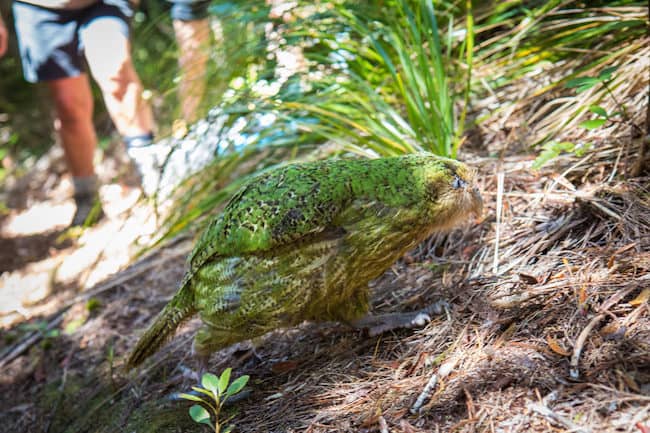
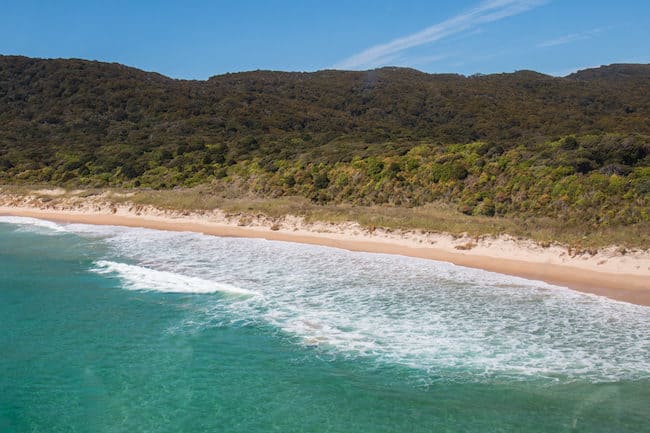
NZAS helped bring kākāpō back from the brink of extinction in their partnership with DOC -The Kākāpō Recovery program started way back when in 1990 when there were only 49 kākāpō remaining.
NZAS staff help with maintenance on the island and go over regularly to help set up and repair the island’s infrastructure with more than 1,100 days of employee volunteer support. Along with the contest winners, a NZAS staff member came over with us to help out.
You know, once we finally made it on the island. Dun dun dun.
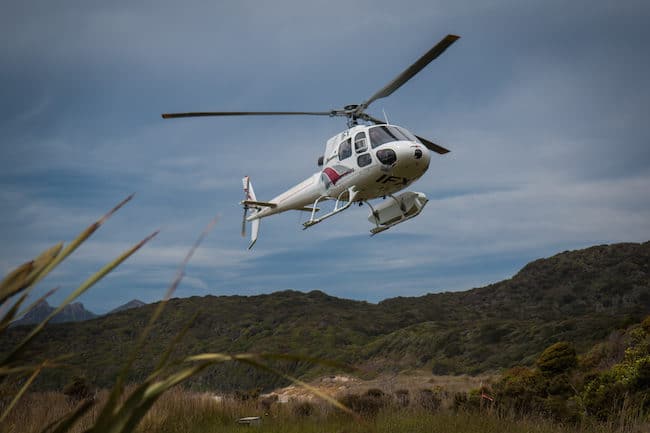
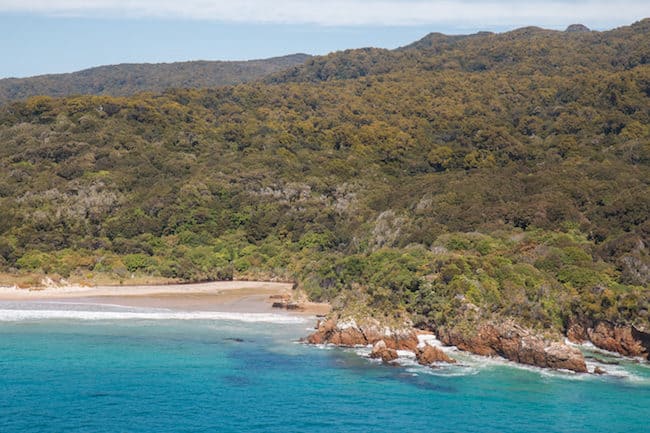
I truly hadn’t realized how lucky I have been with things not going wrong on my travels until last week when even my patience was tested.
Whenua Hou is located right next to Rakiura/Stewart Island, an island off the bottom of the South Island of New Zealand. There is not much between it and Antarctica, so I’m sure you can imagine the weather isn’t always exactly predictable or well-behaved in this part of the world.
Access to Whenua Hou is by permit only from Invercargill after undergoing the most stringent quarantine process this side of the equator.
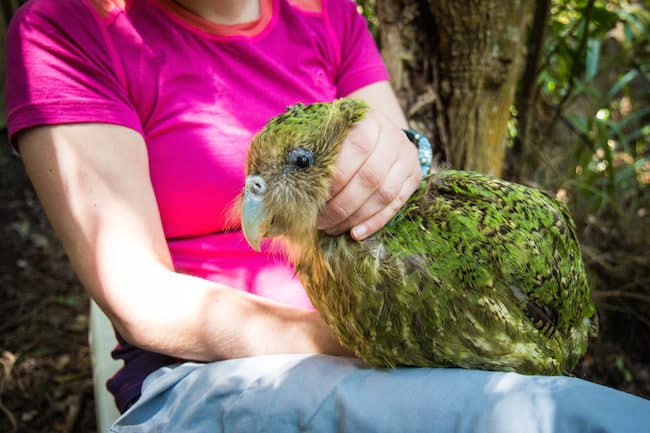
Don’t worry – it’s totally normal they hold their heads like this, it’s to keep them from biting. One time a kākāpō bit a ranger HARD on the nipple and wouldn’t let go!
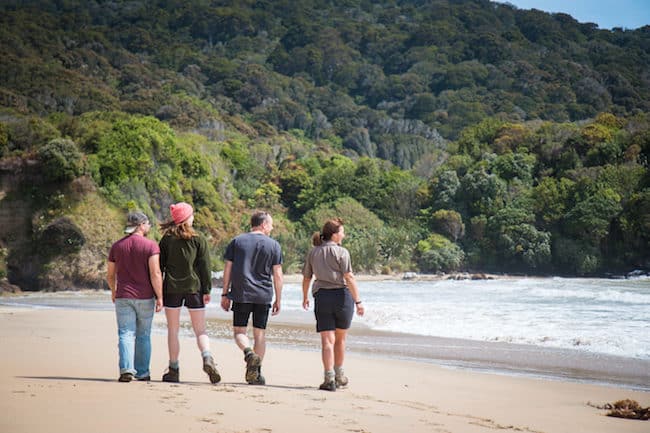
After meeting Amelia and Josh the kākāpō ranger winners, we all journeyed together to quarantine to begin the process of making sure all of our gear and clothes were squeaky clean and pest-free.
If you’ve ever visited New Zealand, you know they take biosecurity very seriously here, especially in customs at the airport. No food, no fruits, no wood, clean shoes, the list goes on and on to protect the special environment here from introduced diseases, insects, and pests. And Whenua Hou is exceptionally important.
I spent hours washing my gear clean, scrubbing dried sheep poop off my boots and rewashing all my clothes only to realize I hadn’t even scratched the surface. Nothing puts biohazards into perspective quite like having to pick out every single seed and bits of grass embedded in the mesh inside your hiking boots for half an hour with tweezers.
Mad respect for the DOC quarantine workers!

Spring in New Zealand can be incredibly windy. Our fixed wing flight to the island was canceled because of it leaving us with a helicopter only option. No complaints here. I love flying in helicopters! Top Gun! Hot pilots!
But just as I picked the last seed out of my boots and had my duffel ready to go, boom, the helicopter got canceled too. NO!
There was a big fire out in Southland which was hard to control thanks to the crazy winds, and all of the choppers had been called away to help put it out. The next few days were a waiting game for the wind to die down.
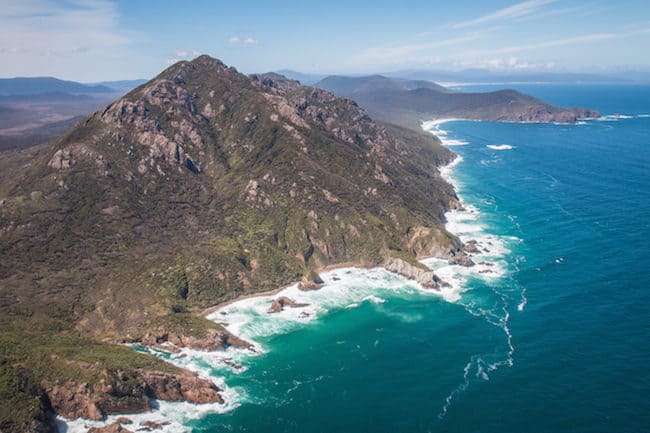
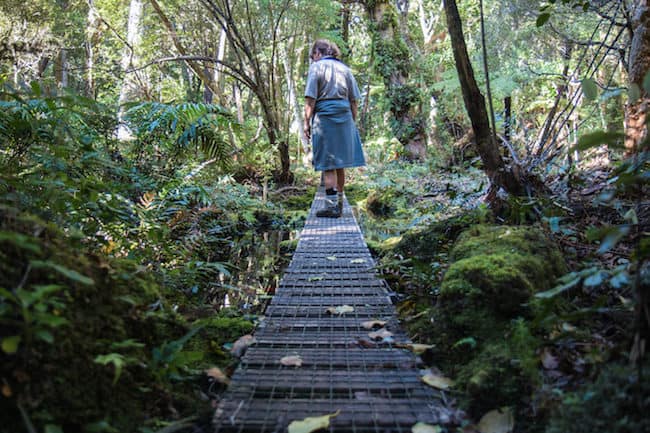
While we waited around, we took in a bit more of the conservation efforts down in Southland.
We visited a breeding center for takahē, another very rare flightless New Zealand bird. Their feathers are so blue it reminds me of the sea here. They were thought to be extinct before they were rediscovered in some of the harshest mountains of New Zealand in the 40s.
We also visited the Southland Museum which has a tuatara breeding program. Tuatara are very cute rare reptiles, and like most native New Zealand animals, they are very weird and interesting; I first saw them on Somes Island in Wellington. They are basically little dinosaurs.
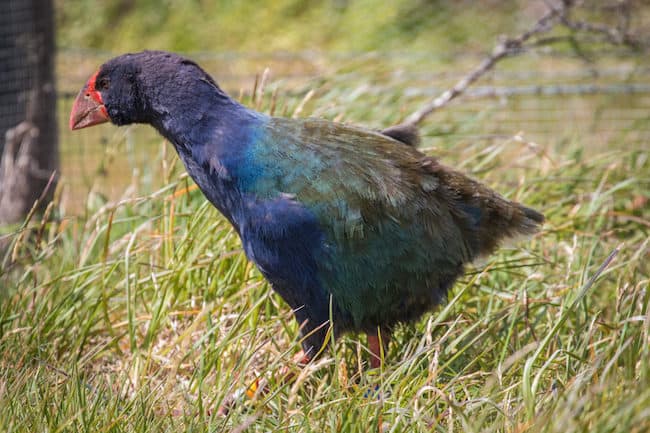
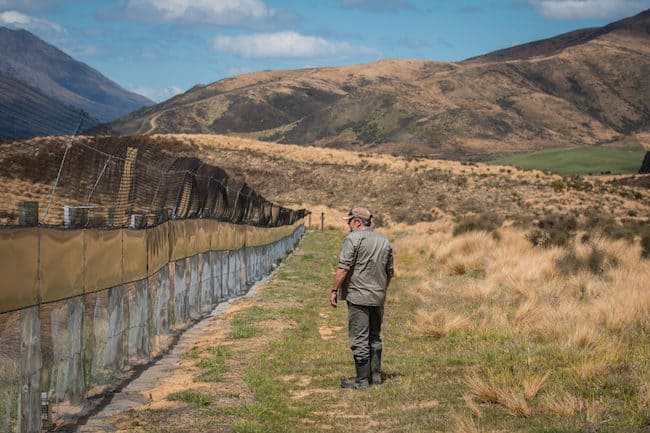
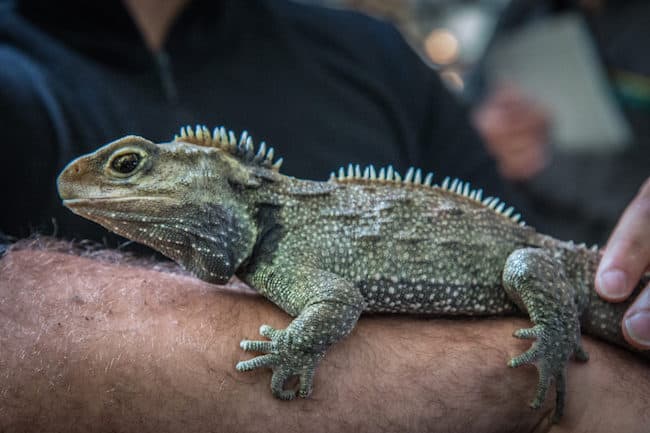
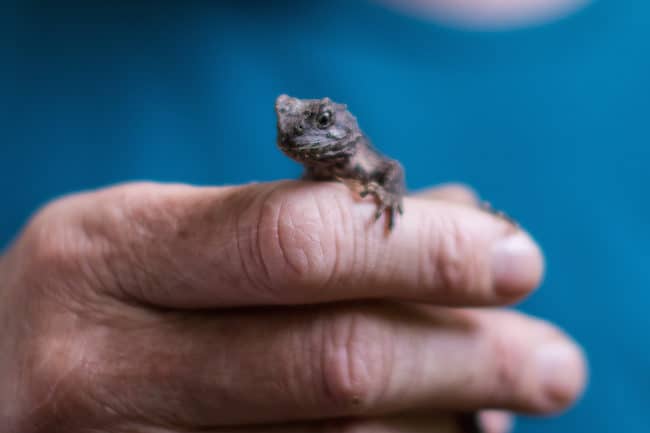
Eventually we had a small enough window to make the flight over. I’ve never come so close to having a trip not go through! It definitely made me appreciate our time on Whenua Hou even more!
A few days after our intended departure, as we flew out over the Foveaux Strait, the morning clouds lifted and the sun turned the water the most beautiful bright turquoise. As we flew over Stewart Island, I was mesmerized by the white sandy beaches and blue water. It looked almost tropical.
Trust me, it’s not tropical.
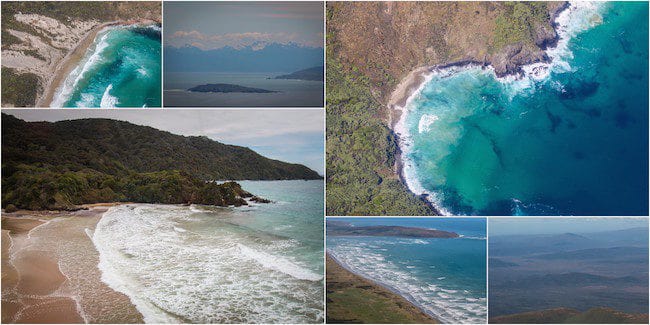
Whenua Hou is a highly important place inMāori culture and to the Ngāi Tahu iwi (tribe), and have a spiritual, physical, cultural level. 200 years ago there was a settlement on the island of European sealers and their Māori partners.
Many Ngāi Tahu families descend from these relationships, with the settlement at Sealers Bay being the first permanent association between Māori and European people in southern New Zealand. Whenua Hou has several important archaeological sites containing significant buried taonga (treasures) and urupā (burial ground), some of which date back to the 13th century.
Kākāpō are considered to be taonga in Māori culture, and even their lost feathers found around the island are returned to the Ngāi Tahu.
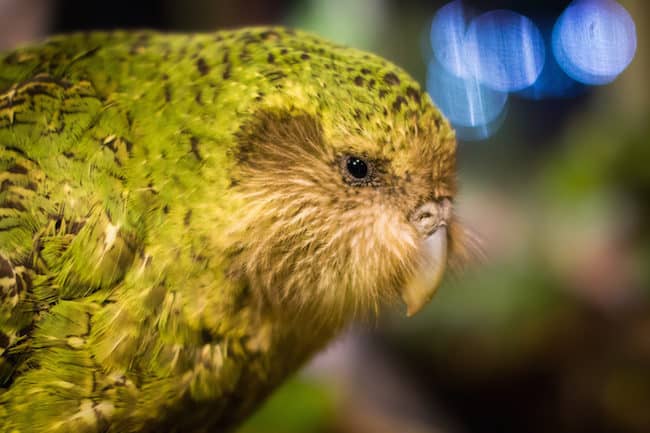
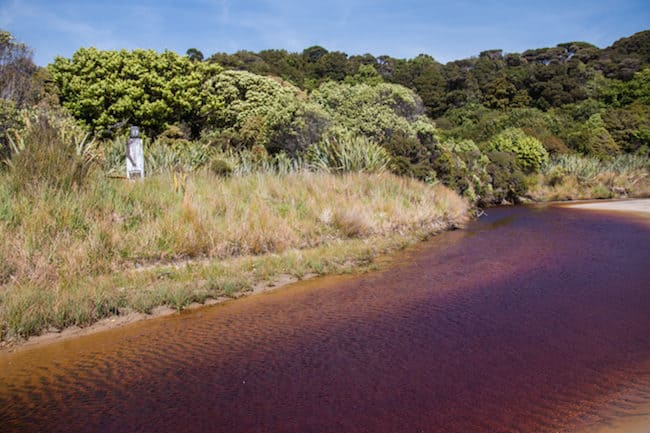
And in the distance I finally got my first glimpse of the place I had been hoping to visit for years – Whenua Hou, home of the kākāpō. Pinch me, was this finally happening?
Have you guys ever visited a place that is so hard to access? At the risk of sounding annoyingly cliche, for me, finally visiting Whenua Hou was a dream come true, mostly because I never thought it would actually happen.
Once we got out of the helicopter and made our way to the hut where you go through one last quarantine check and brief of the island before settling in.
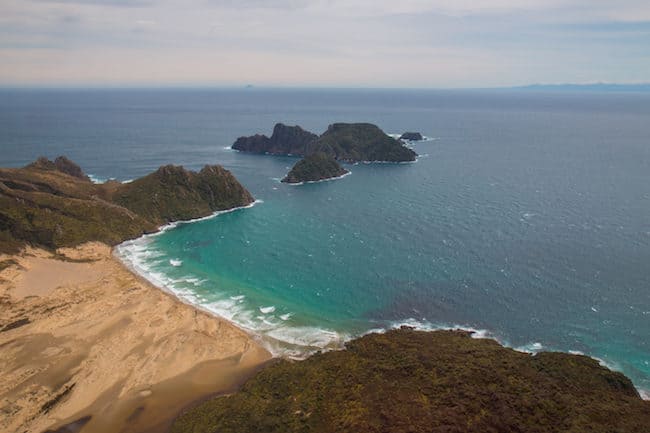
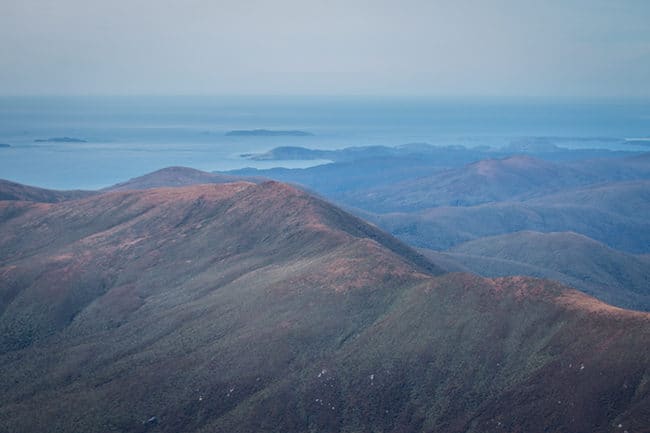
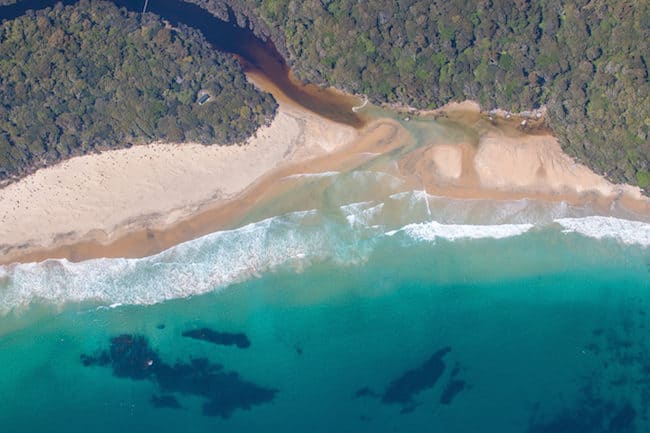
Flying over one of the huts on Stewart Island – can’t wait to stay here one day
The people who are usually on Whenua Hou are generally the DOC kākāpō rangers, volunteers (read more here) and the researchers. There was only a handful of people on the island when we visited which meant we all go to know each other and become friends fast.
The dynamic of getting along with everyone is vital in a place like this where you have to live together in close proximately for long periods of time on an island.
We had a quick lunch and then headed off to start exploring the island and learn how the rangers go about every day.
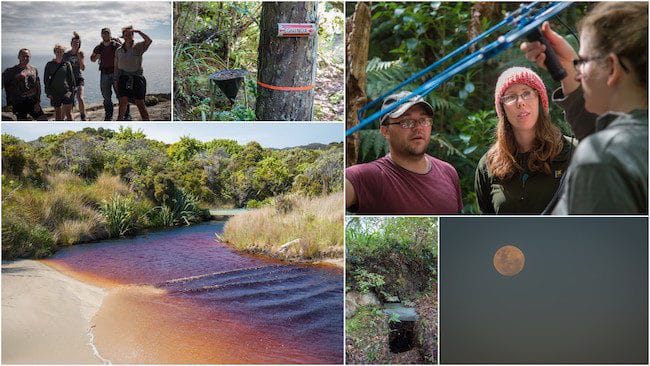
We spent about five hours hiking and climbing through the dense forest. It was about 5 minutes into the walk when I sunk up to my ankles in mud. All those hours of boot cleaning gone! MAN!
Our first task was to release Arab, one of the original kākāpō found by a guy nicknamed Arab on Stewart Island. He had been a bit sick and once he was sorted and put on more weight, it was time to return him to his territory.
It was a really special opportunity to briefly interact with a kākāpō on Whenua Hou as they are actually really really hard to find normally, even on a small island. They are nocturnal and blend in so well with the bush, it can be tricky to find them. One kakapo even hid on Whenua Hou for over 20 years before he was found again.
We were able to have a close look at his feathers, see the transmitter harnesses each kākāpō wear to track them, before heading off to return him to his home. One thing I found really interesting is that they don’t really know how old Arab is (he was found in 1980), or how old kākāpō can live until; these were found in the 70’s when the conservation efforts really took off, so only time will tell (full list of kākāpō here).
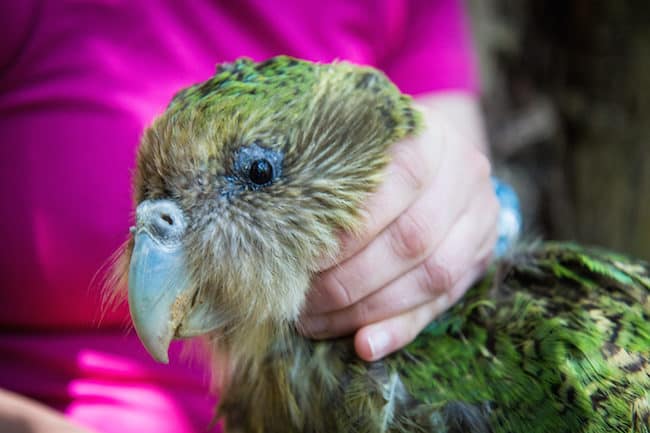
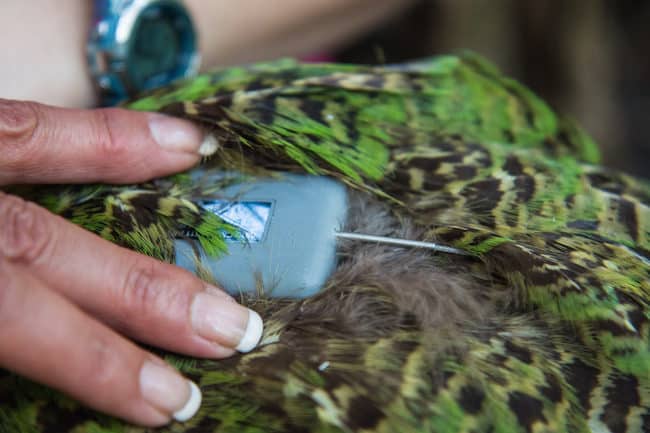
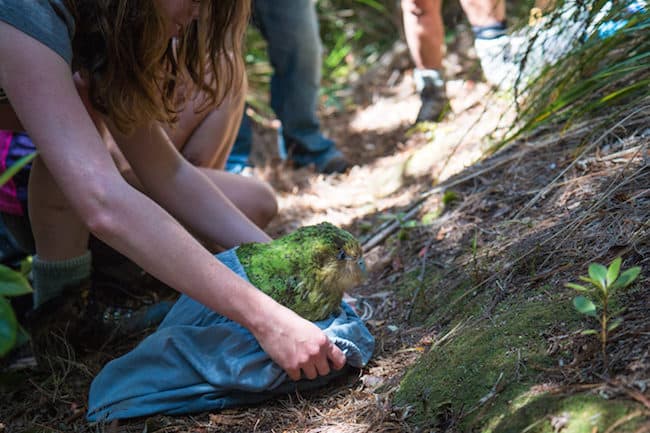

Often we would get a whiff of kākāpō on the breeze even when we couldn’t see them. They have an old musty smell that reminds you that these are ancient creatures. The rangers describe it as the inside of an old violin case, you know those red ones?
Random but true.
If you ever get the opportunity to smell a kākāpō, you’ll believe me. Oh and thank you Arab for letting me smell you. Legend.
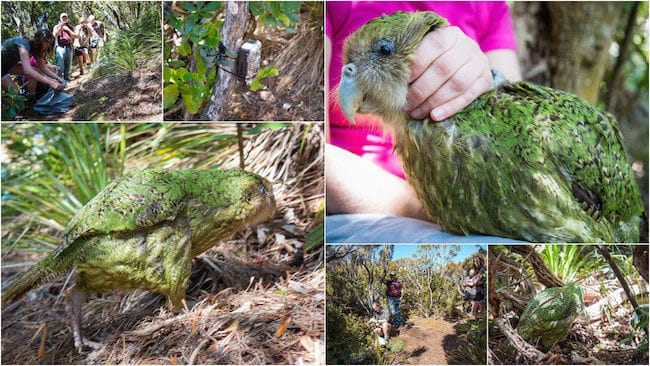
My mind was whirling as I tried to keep up with the ranger carrying Arab up the trails. Seriously, those guys are fit!
As we released Arab, he quickly scampered off into the bush with a very annoyed look on his face.
It was on this tramp that I finally was able to see for myself firsthand what I had only visualized and heard about how kākāpō really live. We were able to see their tracks on the trail from their dinosaur feet, see the rimu fruit that plays such a vital role in their breeding, see where they dig out bowls in the earth and make a trail to lead the females to them (kākāpō sit in the bowls and make a subsonic boom to attract females during mating season), and even see nests from the previous breeding seasons.
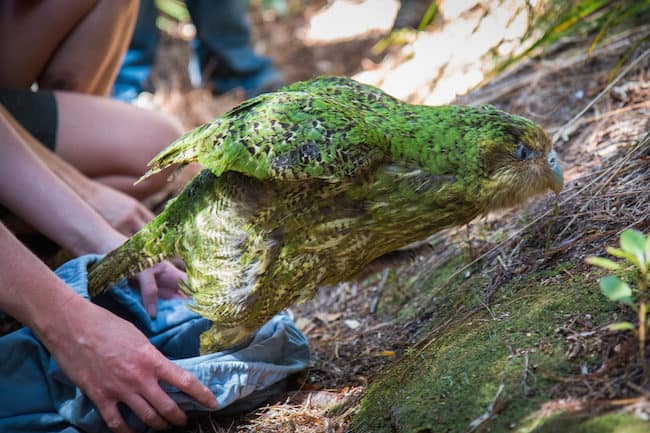
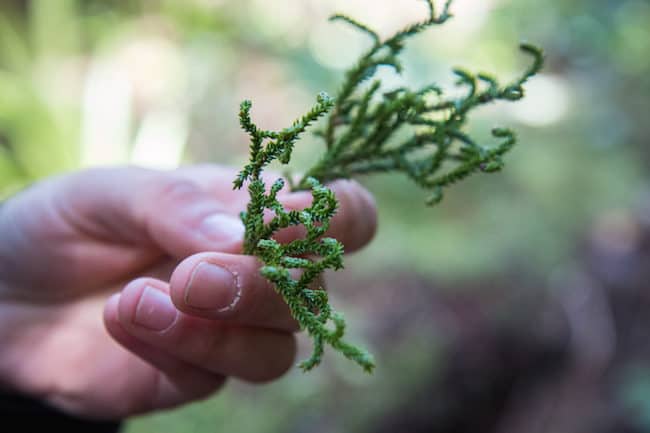
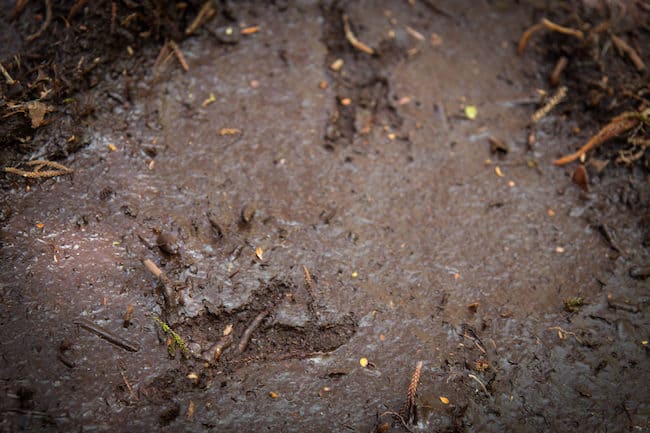
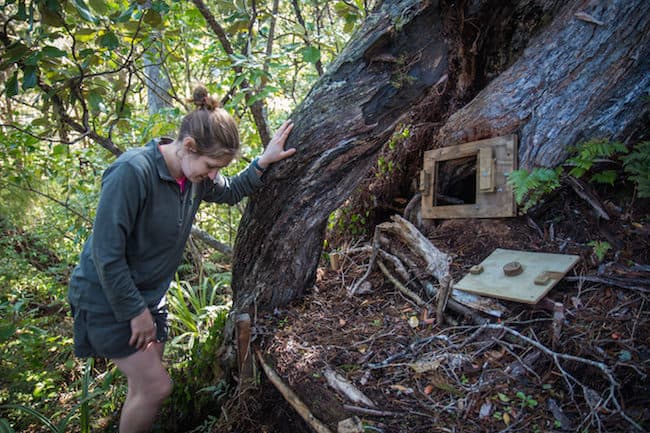
Kākāpō rangers use special telemetry receivers to track the kākāpō. Each kākāpō has its own station on the radio to hear them.
Remember when I told you the story of Ruapuke? The miracle kākāpō born a few years ago after his mother accidentally squashed his egg and a ranger taped it up with masking tape and he survived? We were hoping to find him and spent most of the day trying to track him.
But like all wild animals, they don’t play by the rules and listen to us. And now that Ruapuke is a teenage kākāpō, he likes to go off wandering and exploring, making him hard to find.
Oh well, just another reason so come back!
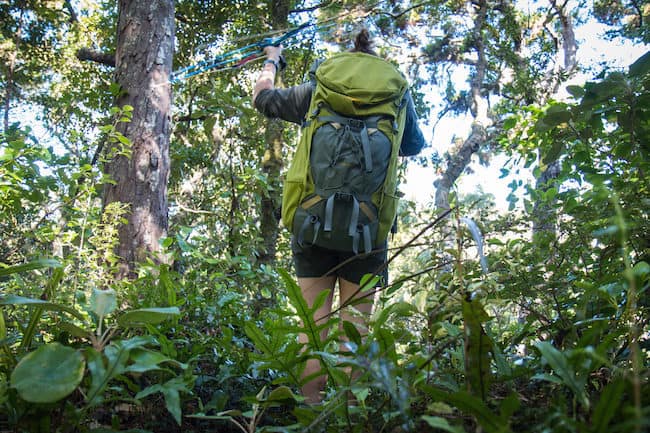
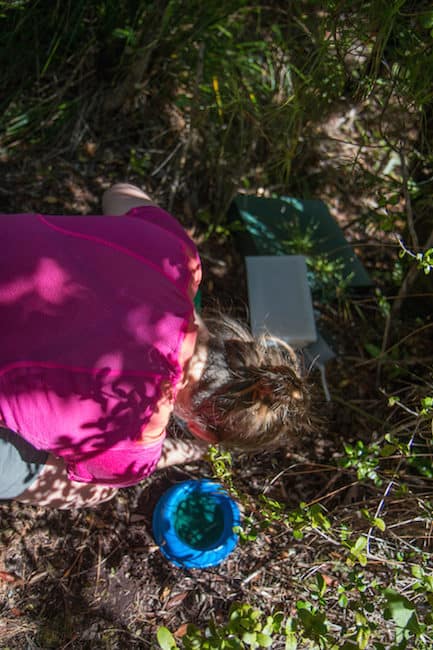
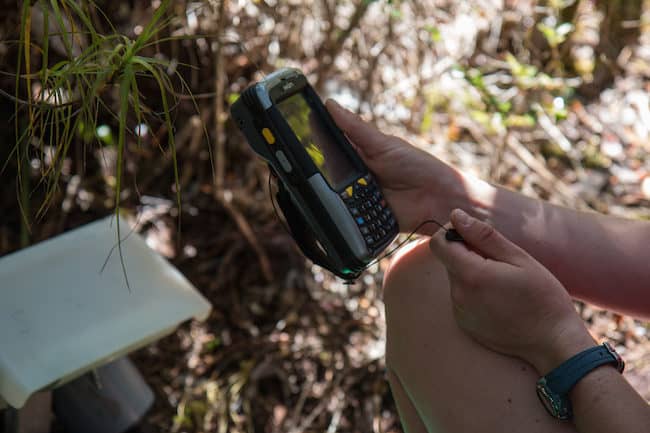
I was grateful to have that experience with Arab and back with Sirocco in Wellington.
Sirocco doesn’t live on Whenua Hou anymore because he doesn’t interact or get along with the other kākāpō and generally annoys everyone else, especially during the mating season. Remember, he was the bird that imprinted on people as a baby and thinks he’s human.
Once he even built his dug out bowl to boom into in on the track to the toilet and would jump on unsuspecting kākāpō rangers in the middle of the night going for a pee. Come on Sirocco, that’s not how you get the ladies.
Seriously guys, how can you not love this bird? HA!
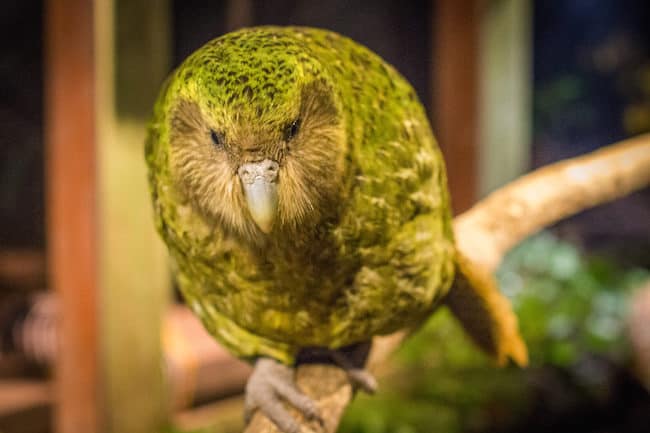

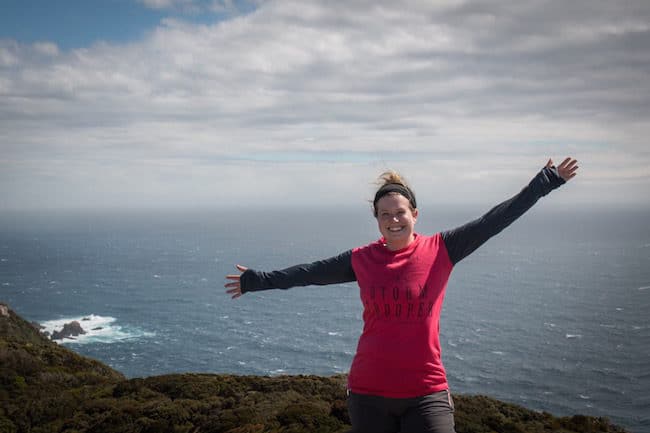
With a fully stocked kitchen, there was the best atmosphere in the evening after a big family dinner with everyone of fully loaded chili nachos. Nothing better than that after a long day in the mud tracking kākāpō!
We watched the sun set over the beach and a huge moonrise and yellow-eyed penguins surfed into the beach home for the night. After the sun went down and the wine was flowing, we all piled around the cozy couches to watch a few documentaries about kākāpō while munching chocolate.
My favorite was from the 70’s or 80’s with original footage showing how the last kākāpō were found in Fiordland and on Stewart Island. Flannel shorts, stubbies shorts, and impressive beards featured prominently.
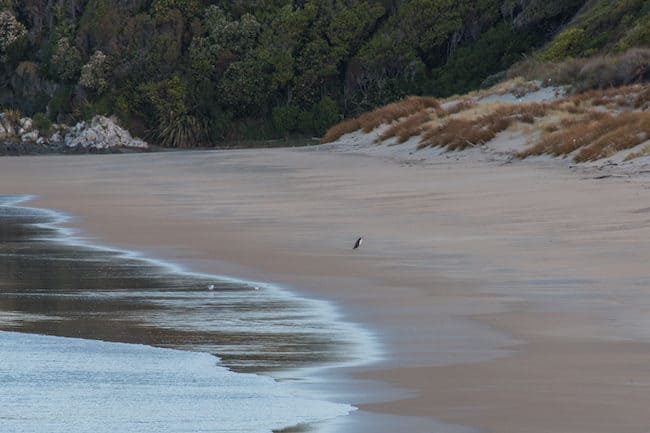

After a good night’s sleep awoken a few times by little blue penguins screeching outside the hut windows, we spent the next morning exploring and helping fix up the chick enclosure for the upcoming breeding season.
On an island where every little bit of help matters, it felt amazing to lend a hand on something important, even though there were some huge (and I mean HUGE) spiders lurking behind some of the enclosure walls.
Seriously though, not cool.
I’m not going to talk about leaving Whenua Hou because it depresses me. I’ll be back guys.
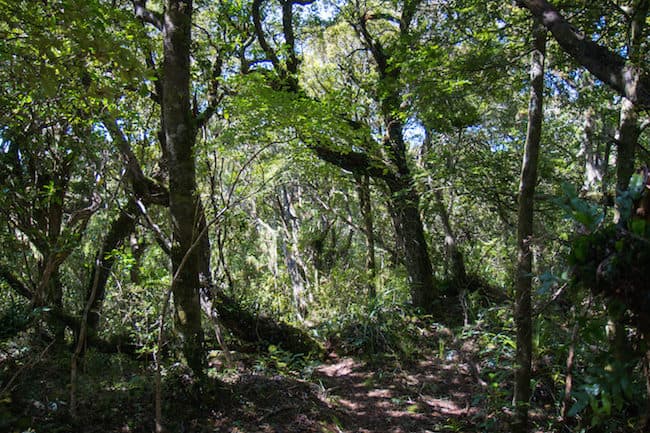
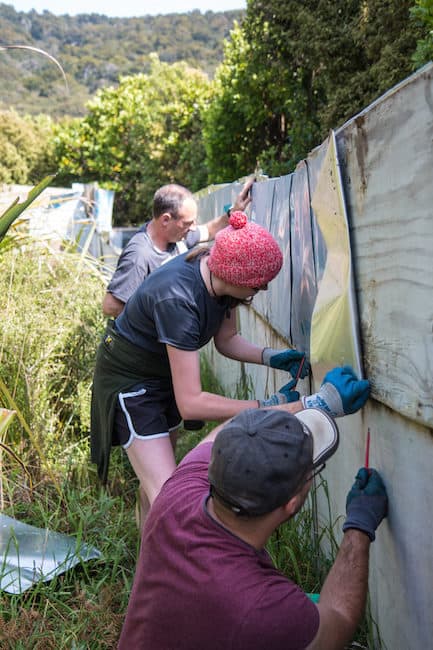
Seriously I could go on and on guys.
To me kākāpō represents New Zealand’s original culture, before humans, when it was a land of birds and these bizarre green parrots reigned supreme. They are beautiful and quirky, dignified and clumsy, ancient and sprightly. They are a bird of beautiful contradictions and fascinating personalities, and it’s directly our fault they almost disappeared from the face of the planet.
I haven’t figured it out exactly yet, but I’m determined to do my part to help save these guys.
Have I converted you into a #BirdNerd yet? How interesting is the history of the kākāpō? Would you like to volunteer or visit Whenua Hou and see their home one day too?
**You can donate to kākāpō recovery here.
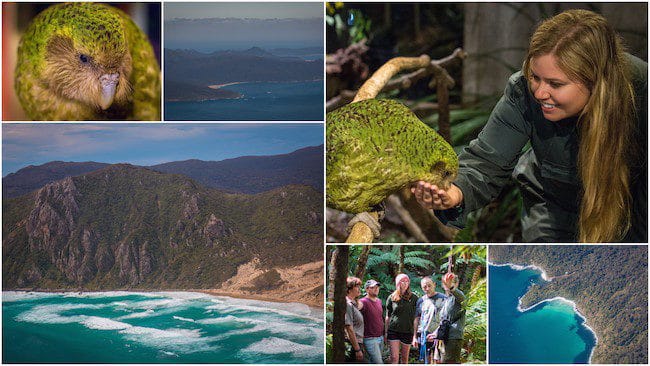
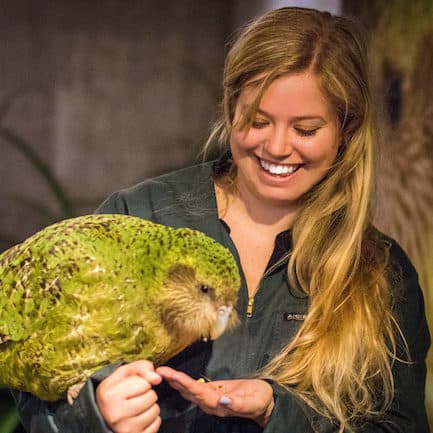
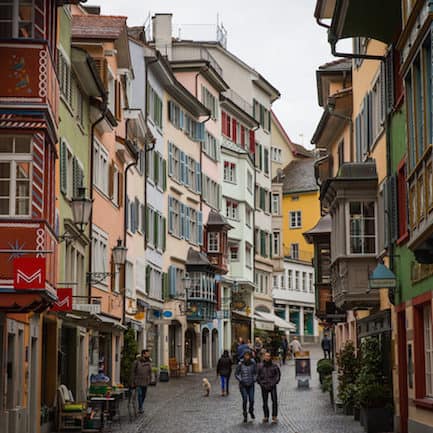
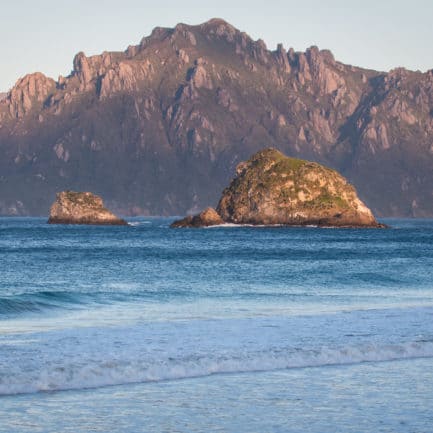
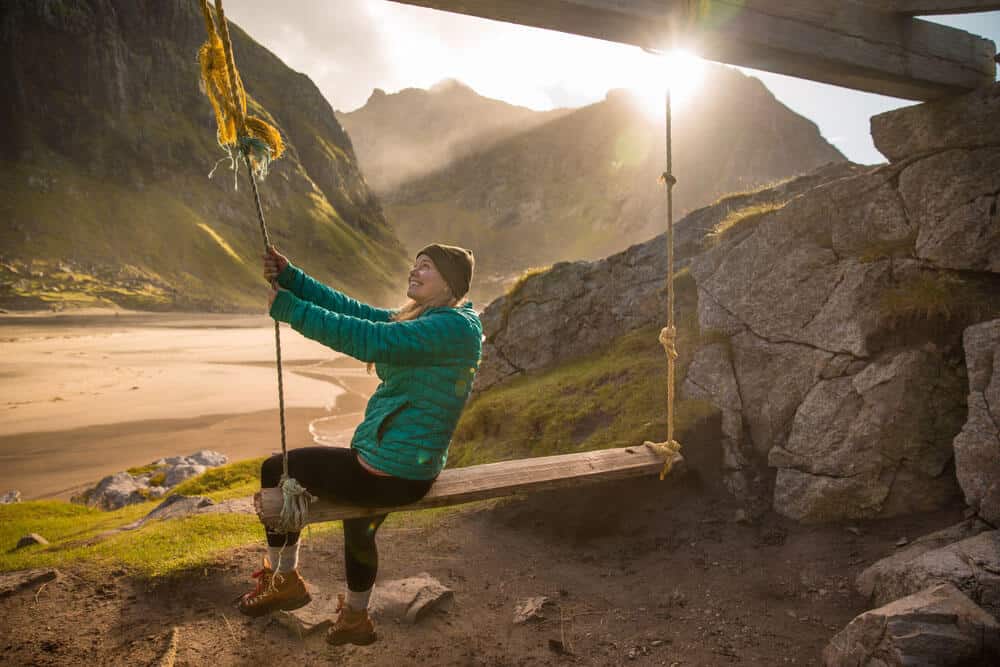
So amazingly enthusiatic.This story brought things alive for a bird I have read about before.Smells like the inside of a violin case and has a sharp pecker. Wow what a character assessment and more. Mike a ThaiKiwi in BK
hahaha <3
Kakapos are the cutest thing ever! I learned the first time about them on your blog, from that point I know that when I’ll travel to New Zealand that I must see a real Kakapo!
be sure to try and see Sirocco when you’re here 🙂
That sounds like a great experience! 🙂
They’re beautiful birds! 🙂
So beautiful!
Yup, you’ve totally converted me. What a dream trip! I’d absolutely love to volunteer one day. I really loved reading this, thanks so much for sharing.
Happy travels 🙂
Thanks!